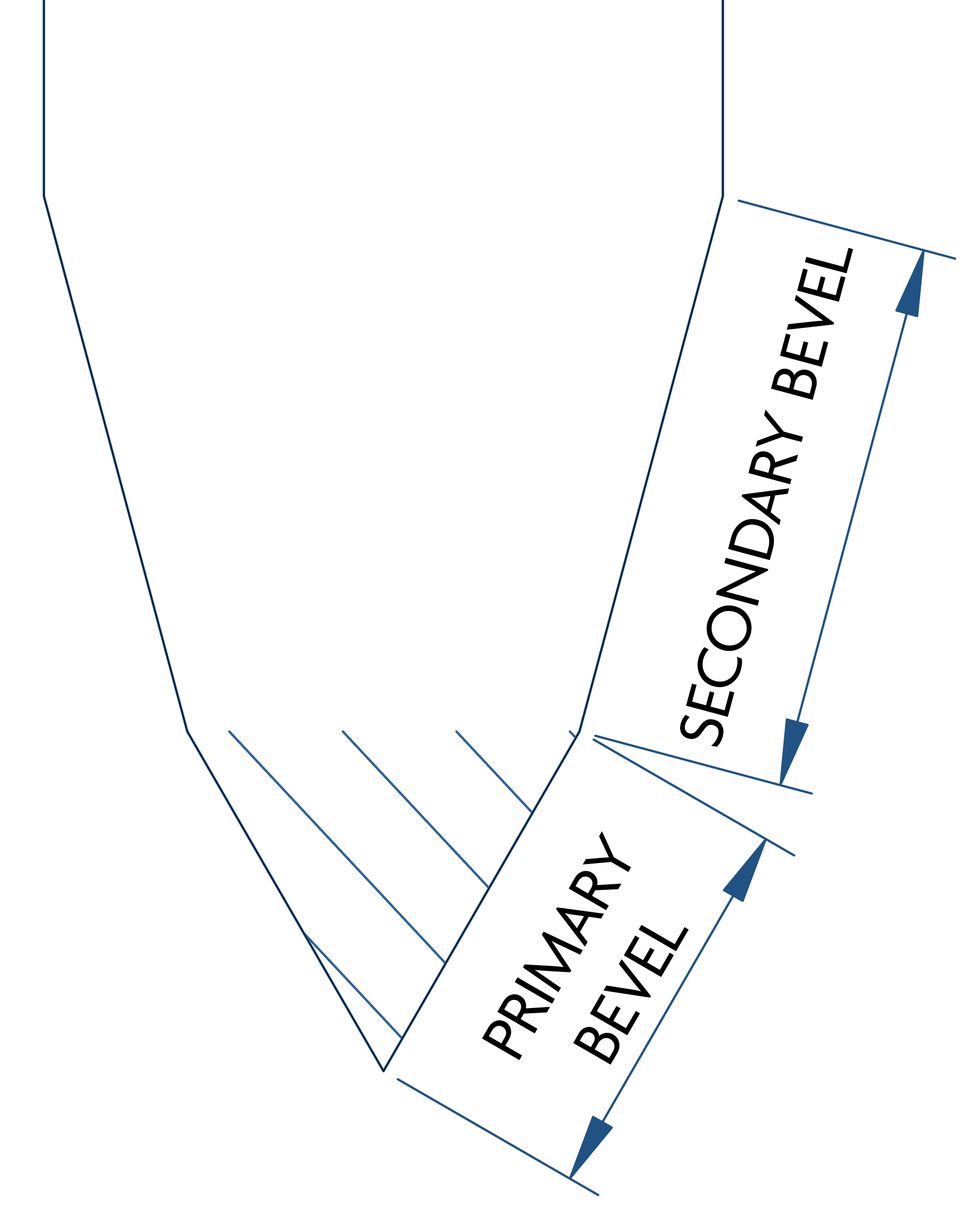Industrial blades come in many different shapes and sizes: single edge versus double edge, chisel versus symmetric blades... In this article, we will focus on the two types of bevels and how single bevel vs double bevel blades affect slitting. This comprehensive guide will help you choose the right blade for your industrial cutting needs.
What Is a Bevel?
First things first, to understand the difference between a single and a double bevel blade, you need to know what a bevel is. In the context of industrial blades, a bevel refers to the angled edge grinded onto the blade. This angled edge is what makes the slitting edge of the razor blade. So the bevel is the angled edge and it can consist out of multiple angles, making it a single our double bevel blade.
What's the Difference between a Razor Blade Bevel and Edge?
Often there is confusion between the edge of a blade and the bevel. Before we go any further it is important to point out the difference. The edge of a blade refers to the side of the blade that has a sharp bevel, the bevel is the angle that is grinded onto the side of the blade. The fact that a blade can have multiple sides with a bevel makes it a single edge blade or double edge blade, the use of single edge blades blades is driven by safety reasons. Further in this article we we focus on the bevels of the blade and the examples shown are symmetric blades.
Is There a Difference in Slitting Between Single Bevel Versus Double Bevel Blades?
Yes, there’s a difference in slitting when using single bevel versus double bevel blades in the context of industrial slitting
Which Industrial Razor Blade Is Right for Your Industry?
At Fortisblades, we understand the critical importance of choosing the right industrial razor blades for your slitting applications. If you're uncertain whether single bevel or double bevel blades are the best fit for your industrial cutting needs, look no further. Our team of experts is here to assist you every step of the way. With our extensive knowledge and experience in the field, we will provide you with accurate information and guide you to the perfect blade solution tailored to your specific requirements.
Find the Best Razor Blade for Your Product
Contact us and together we will find a solution





